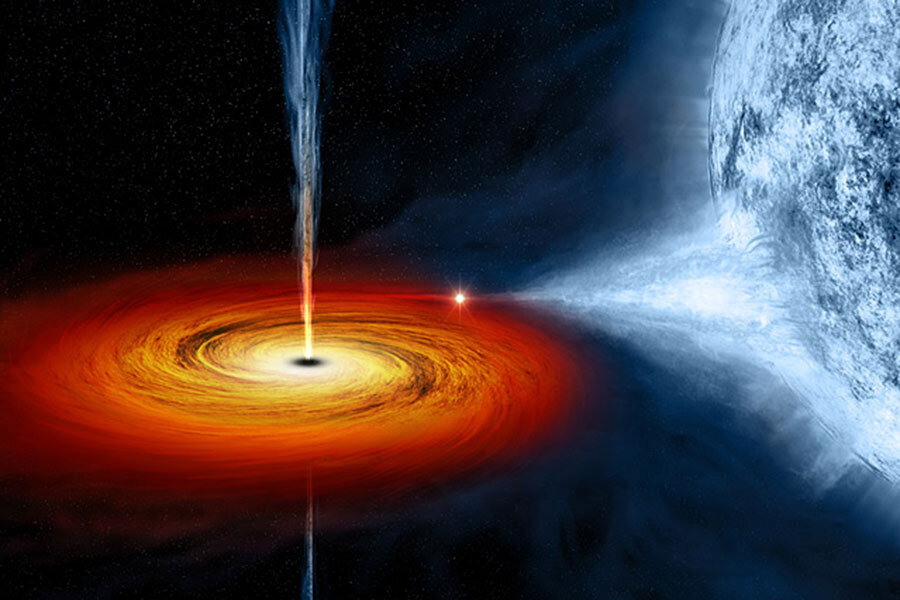What does a black hole actually look like? An algorithm for a portrait
Loading...
Despite the efforts of movies such as Interstellar and 2001 Space Odyssey, we have yet to actually capture an image of a black hole.
Now, scientists from Massachusetts Institute of Technology (MIT) and Harvard University have an algorithm to change that.
Central to their black hole image-making methodology is a new algorithm that would take data from radio telescopes around the globe and meld that information into a single portrait, taking advantage of a project known as Event Horizon Telescope. So far, six observatories are signed up, with more likely to follow.
In essence, the project aims to make the entire Earth one giant radio telescope. The job could be done with a single radio telescope, but because of the long wavelength of radio waves, in order to image a black hole, such a device would need a diameter of 10,000 kilometers (6,213 miles) – somewhat impractical on a planet that itself measures less than 13,000 kilometers (8,077 miles) across.
“A black hole is very, very far away and very compact," explained Katie Bouman, an MIT graduate student in electrical engineering and computer science, who led the development of the new algorithm. “It's equivalent to taking an image of a grapefruit on the moon.”
The largest single radio-telescope dish to currently inhabit our world has a diameter of 1,000 feet. Even taking an image of the moon with such a tool would yield a visible image blurrier than what you might see through a backyard telescope.
So, why use radio waves at all?
“Radio wavelengths come with a lot of advantages,” said Ms. Bouman in an MIT press release. “Just like how radio frequencies will go through walls, they pierce through galactic dust. We would never be able to see into the center of our galaxy in visible wavelengths because there’s too much stuff in between.”
But even if the number of observatories participating were to double, there would be gaps in the data, as they struggle to construct an image equivalent to what could be obtained with a 10,000 kilometer-wide dish.
Thus the need for Bouman’s algebraic algorithm, the name of which is Continuous High-resolution Image Reconstruction using Patch priors. In case that doesn’t quite roll off the tongue, there is also an acronym: CHIRP.
CHIRP could be applied to any system that employs radio interferometry, as the Event Horizon Telescope does. Essentially, this is where signals detected by pairs of telescopes are combined, mimicking the effect of a much bigger telescope.
But even this method has its drawbacks. Any astronomical signal will normally arrive at two given telescopes, located at different points on the globe, at slightly different times. Add to that the effect of the Earth’s atmosphere, which slows those signals down and exaggerates the difference, and the discrepancy to be accounted for becomes substantial.
To counter these challenges, Bouman’s method requires the information from three telescopes, which allows the atmospheric noise to effectively be cancelled out.
In an effort to yield images even more precise, the team went further. Added to the data collected from these telescopes, the algorithm also uses complex calculations of what an image would be expected to look like.
"Suppose you want a high-resolution video of a baseball," said Yoav Schechner, a professor of electrical engineering at Israel's Technion, who was not involved in the work. "The nature of ballistic trajectory is prior knowledge about a ball's trajectory. In essence, the prior knowledge constrains the sought unknowns. Hence, the exact state of the ball in space-time can be well determined using sparsely captured data."
The work of Bouman and her team, which Dr. Schechner describes as a “highly advanced approach” will likely make a significant contribution to the work of the Event Horizon Telescope, a project that seeks to continue delving into black holes for another decade or more.








